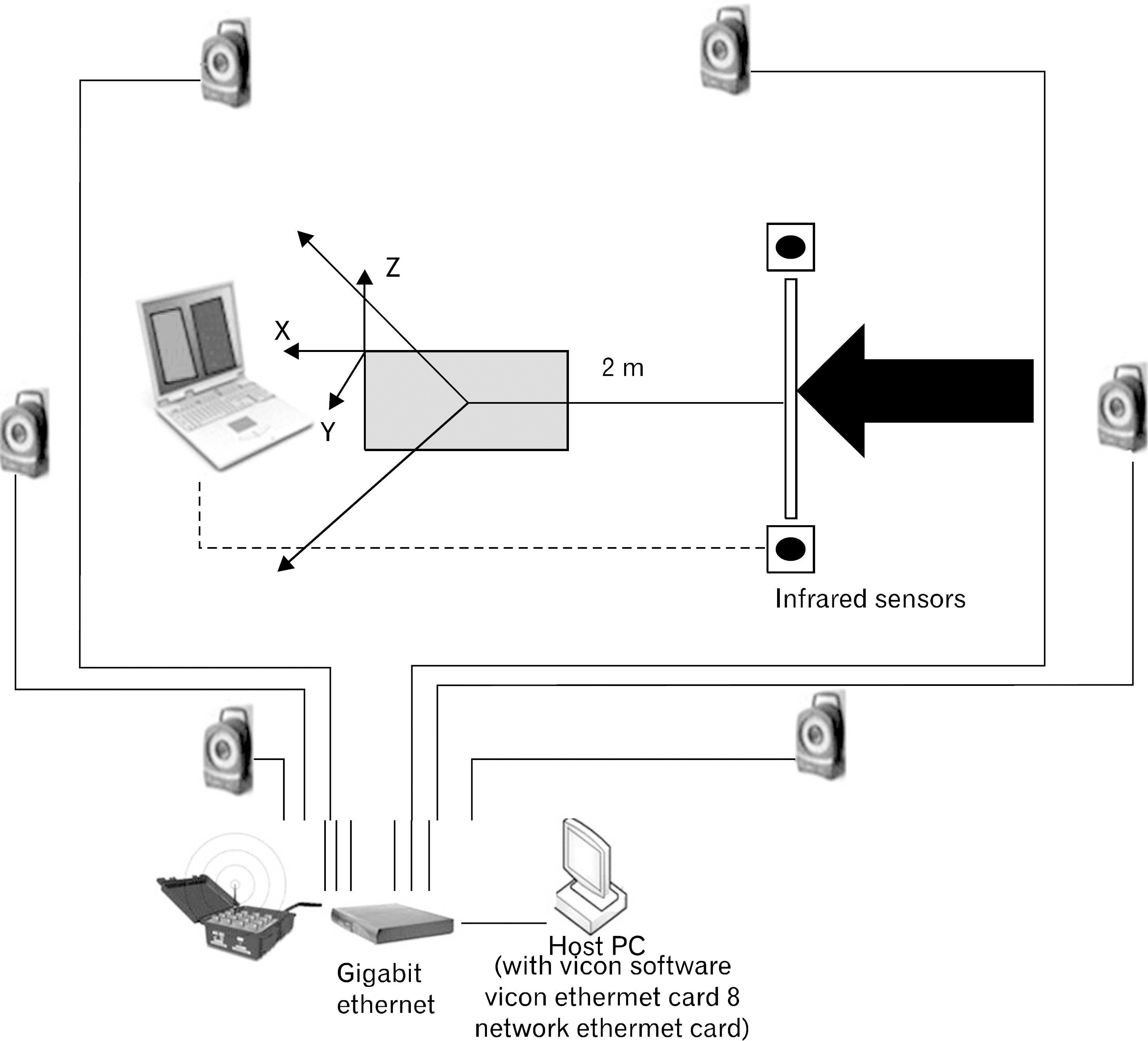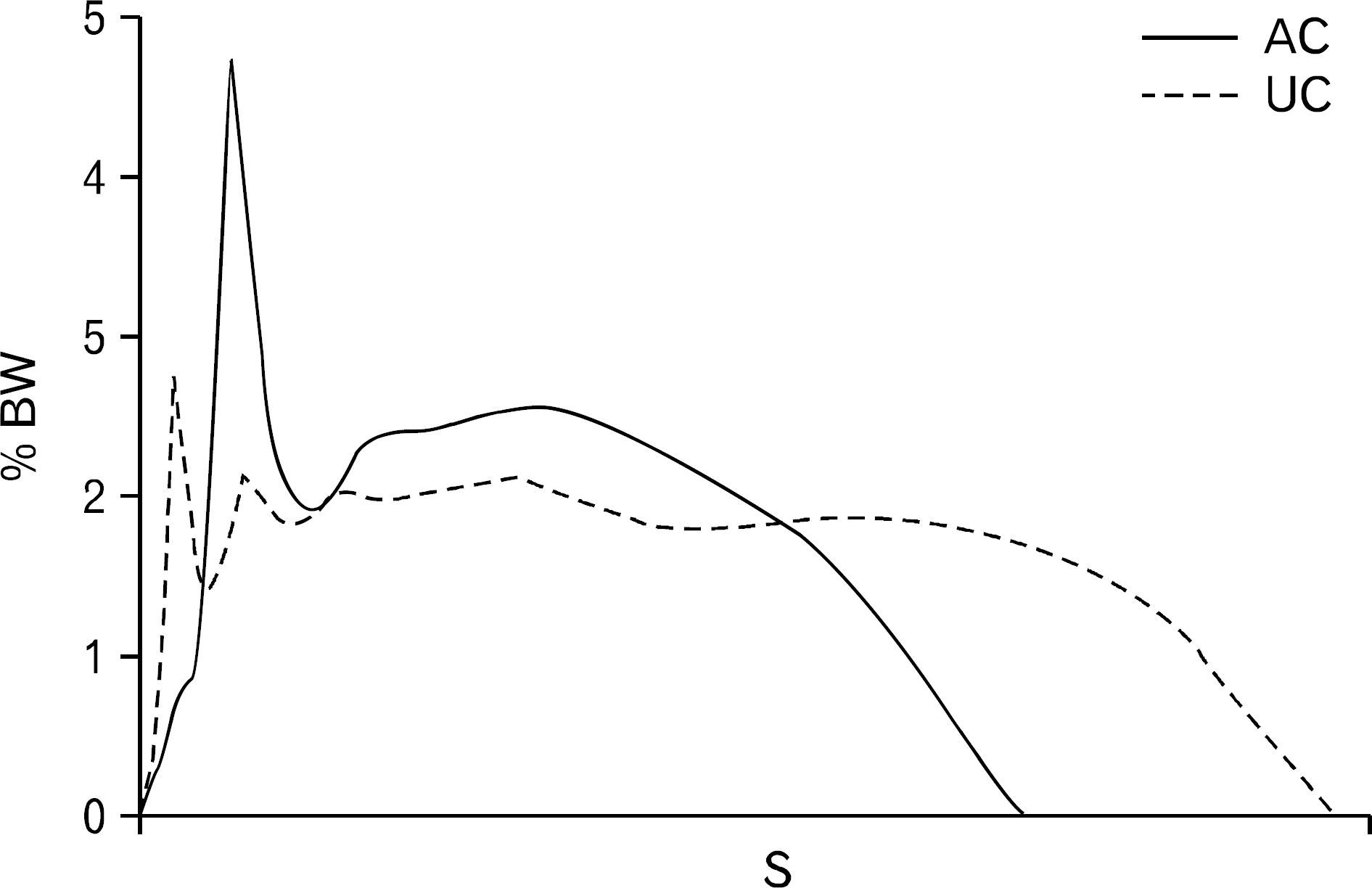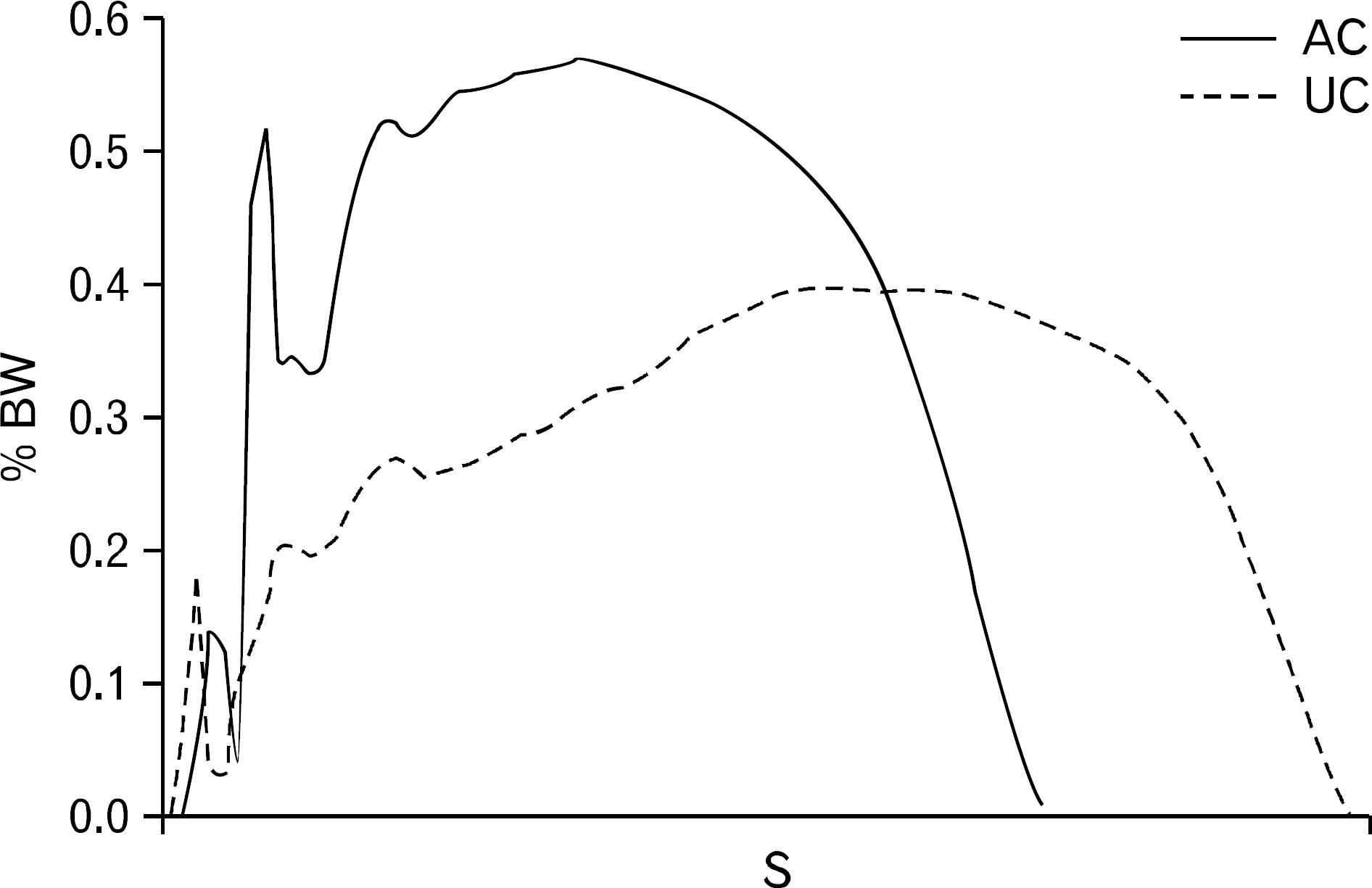Korean J Sports Med.
2011 Jun;29(1):26-36. 10.5763/kjsm.2011.29.1.26.
Effect of Anticipation and Fatigue on Lower Extremity Joint Loads during Side-cutting in Female Soccer Player
- Affiliations
-
- 1Department of Sport Science, Kookmin University, Seoul, Korea. kklee@kookmin.ac.kr
- 2Department of Orthopedic Surgery, Ajou University Hospital, Suwon, Korea.
- 3Department of Physical Education, Chungang University, Seoul, Korea.
- 4Department of Physical Education, Kyungnam University, Changwon, Korea.
- KMID: 2054005
- DOI: http://doi.org/10.5763/kjsm.2011.29.1.26
Abstract
- To investigate effect of fatigue and anticipation on lower extremity joint load during a side-cutting maneuver in female collegiate soccer players, thirteen female collegiate soccer players whose right leg dominant participated in this study. Three dimensional motion analysis system and a force plate were used to record the 45degrees side cutting maneuver. In the first, anticipated and unanticipated cutting were measured in the pre-fatigue condition. Second, participations performed the fatigue protocol by the squat exercise with weight lifting. And then, two different type of cutting task were measured again after fatigue condition. The cutting direction let known before start their running in case of the anticipated cutting, the random signal of cutting direction were presented in the unanticipated condition. In the results, the most influential variable was anticipation factor. Lower limb angles represented significantly flexed posture during unanticipated cutting than anticipated condition. Maximum knee flexion moment represented significantly higher in unanticipated cutting than anticipated cutting. Adduction and internal rotation moment of lower limb joint decreased in unanticipated cutting. Fatigue factor was influenced by the initial contact angles of the ankle joint. Lower limb angles at the initial ground contact indicated more erect posture in post-fatigue condition. The unanticipation factor had more effect on locomotors ability of lower limb in this study. Therefore, the sensory-motor training to adapt to unanticipated situation should be considered for the injury prevention training program.
MeSH Terms
Figure
Reference
-
References
1. Agel J, Palmieri-Smith RM, Dick R, Wojtys EM, Marshall SW. Descriptive epidemiology of collegiate women's volleyball injuries: National Collegiate Athletic Association Injury Surveillance System, 1988–1989 through 2003–2004. J Athl Train. 2007; 42:295–302.2. Han KH, Lim BO. Mechanism and risk factors of anterior cruciate ligament injuries in female athletes. Kinesiology. 2009; 11:61–83.3. Gehring D, Melnyk M, Gollhofer A. Gender and fatigue have influence on knee joint control strategies during landing. Clin Biomech (Bristol, Avon). 2009; 24:82–7.
Article4. Beaulieu ML, Lamontagne M, Xu L. Lower limb muscle activity and kinematics of an unanticipated cutting manoeuvre: a gender comparison. Knee Surg Sports Traumatol Arthrosc. 2009; 17:968–76.
Article5. Borotikar BS, Newcomer R, Koppes R, McLean SG. Combined effects of fatigue and decision making on female lower limb landing postures: central and peripheral contributions to ACL injury risk. Clin Biomech (Bristol, Avon). 2008; 23:81–92.
Article6. Ford KR, Myer GD, Toms HE, Hewett TE. Gender differences in the kinematics of unanticipated cutting in young athletes. Med Sci Sports Exerc. 2005; 37:124–9.
Article7. Landry SC, McKean KA, Hubley-Kozey CL, Stanish WD, Deluzio KJ. Gender differences exist in neuromuscular control patterns during the pre-contact and early stance phase of an unanticipated side-cut and cross-cut maneuver in 15–18 years old adolescent soccer players. J Electromyogr Kinesiol. 2009; 19:e370–9.
Article8. Lohmander LS, Ostenberg A, Englund M, Roos H. High prevalence of knee osteoarthritis, pain, and functional limitations in female soccer players twelve years after anterior cruciate ligament injury. Arthritis Rheum. 2004; 50:3145–52.
Article9. Besier TF, Lloyd DG, Ackland TR, Cochrane JL. Anticipatory effects on knee joint loading during running and cutting maneuvers. Med Sci Sports Exerc. 2001; 33:1176–81.
Article10. James CR, Scheuermann BW, Smith MP. Effects of two neuromuscular fatigue protocols on landing performance. J Electromyogr Kinesiol. 2010; 20:667–75.
Article11. Kernozek TW, Torry MR, Iwasaki M. Gender differences in lower extremity landing mechanics caused by neuromuscular fatigue. Am J Sports Med. 2008; 36:554–65.
Article12. Benjaminse A, Gokeler A, Fleisig GS, Sell TC, Otten B. What is the true evidence for gender-related differences during plant and cut maneuvers? A systematic review. Knee Surg Sports Traumatol Arthrosc. 2011; 19:42–54.
Article13. Gerbino PG, Griffin ED, Zurakowski D. Comparison of standing balance between female collegiate dancers and soccer players. Gait Posture. 2007; 26:501–7.
Article14. Besier TF, Lloyd DG, Ackland TR. Muscle activation strategies at the knee during running and cutting maneuvers. Med Sci Sports Exerc. 2003; 35:119–27.
Article15. Nigg BM, Liu W. The effect of muscle stiffness and damping on simulated impact force peaks during running. J Biomech. 1999; 32:849–56.
Article16. Houck J. Muscle activation patterns of selected lower extremity muscles during stepping and cutting tasks. J Electromyogr Kinesiol. 2003; 13:545–54.
Article17. Bahr R, Krosshaug T. Understanding injury mechanisms: a key component of preventing injuries in sport. Br J Sports Med. 2005; 39:324–9.
Article
- Full Text Links
- Actions
-
Cited
- CITED
-
- Close
- Share
- Similar articles
-
- The Comparative Study on the Supplement Use Habits of Korean Professional Soccer Players and Non-Athletic Males
- Influence of Transcranial Direct Current Stimulation on Lower Limb Muscle Activation and Balance Ability in Soccer Player
- Stress Fracture in Medial Malleolus in Ankle (A Case Report)
- The Fatigue Fracture of the Metatarsal in an Unilateral A-K amputee: A case report
- Fracture of the Fifth Proximal Metatarsal Bone in Soccer Players




